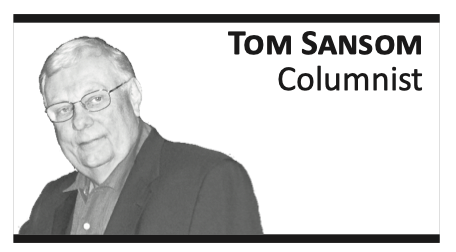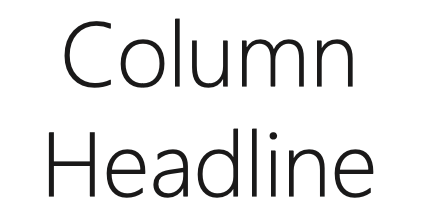Many years ago, I wrote a column as a refresher course on the Sun Day’s content because there was some confusion circulating over its, for lack of a better word, “definition,” and it was perceived that all the material published in the Sun Day was “news.” Which is an understandable mistake because it’s a “newspaper,” after all. What would you expect to find in a newspaper? Baking recipes? Well, yes, baking recipes are commonplace in newspapers, especially around holidays, but you get my point. Newspapers print news. But not all news is news.
Makes sense, right?
Thought not.
Let me explain.
The Sun Day, along with most newspapers, predominantly publishes four types of content: Articles, Columns, Letters, Blurbs/Briefs.
Let’s work in reverse.
Blurbs/Briefs (Quicks)
In almost every newspaper on the planet, blurbs/briefs are called blurbs/briefs. In the Sun Day, they’re called Quicks because that’s what they are, quick little tokens of important or essential information that pepper the paper but don’t necessarily warrant the focus of a full story (or article). And, if I’m being completely honest, Quicks, while important and useful, are known internally as “fillers” and are quite effective at filling those small or odd blank spaces that appear around beefier content. In the Sun Day’s print edition, they appear in a small font and are laid out ragged right, which means the left side is completely straight and the right side is uneven. Quicks can and should be taken literally and as possessing accurate information.
Letters and Columns
Though very different, I’m combining letters and columns because they contain an element that no other content in the Sun Day contains: opinion.
While a column and a letter may contain accurate and truthful information that information and its subtext is up to the interpretation of the author and how they present it to their readers. Opposed to a newspaper’s black and white nature, columns and letters are a gray area, and they’re designed to ask readers, though never said, Do you agree or disagree with what’s said here?
Despite their inherent similarities, there are distinct differences in columns and letters in the Sun Day (and in every newspaper). Let me quickly break them down into their respective categories.
Columns, first, are submitted to the Sun Day by official Sun Day contributors. While not technically employed by the Sun Day, they have regular and reserved spots for their submissions. Second, they are distinctly different in appearance. Columns can be identified by two primary characteristics.
1) In almost every case, but Joe Sison’s cartoons and Christine Such’s occasional crossword puzzles, columns in the print edition are set off with a picture of the author. Here, for example, is movie columnist Tom Sansom’s:

It’s important to note that the byline and attribute are also in the mugshot (headshot) box.
2) Headlines above columns in the print edition are always a very thin font like this:

Opposed to columns, letters are submitted by readers and never are guaranteed publication (though we do our best to run every piece that comes in). They typically run on page 2 (or wherever else space allows). There are three distinct identifiers for letters. 1) While they can be long, they’re usually only about 100-150 words, making them longer than Quicks but nowhere near so long as a column (except in some instances). 2) Their byline FOLLOWS the letter and is printed after the last sentence.
3) Letters NEVER contain a headline.
Columns and letters can be taken literally and as possessing accurate information but that information is subject to the authors’ interpretations and may not always be considered accurate or truthful.
Articles (or News Stories)
The granddaddy of them all.
Articles are the primary focus of the Sun Day and contain, in some variation, “news,” bearing accurate and truthful information, or at least so much as we were able to officially determine as accurate and truthful at the time. The information presented in a news story is NOT up to the author’s interpretations. While the author can take creative liberties in the exact way in which they present the story, they are simply a conduit for the transmission of facts. That doesn’t mean they’re perfect. Yes, occasionally they contain errors but that’s what clarifications and retractions are for. To correct those mistakes.
News stories are researched, interviewed, photographed, and written by contributors and/or staff reporters operating on an official capacity for the Sun Day.
Their identifiers include a byline that sets off the story, bigger, thicker headlines that may or may not be accompanied by a smaller sub-headline, and may include a photo and dateline.
There are many subcategories and subtexts of news stories that I could bore you to death with, but they all amount to the same thing. Like their much smaller counterparts Quicks, articles/stories can and should be taken literally and as possessing accurate and truthful information.
So there you have it, the Sun Day broken down into three easy parts. But no matter the form the information is presented, the Sun Day strives to offer you with quality material that we take very seriously organizing and selecting for each edition. And no matter its author, there is one thing all content in the Sun Day shares: it’s all for you. And I do mean that very literally. Everything the Sun Day does is for you.




